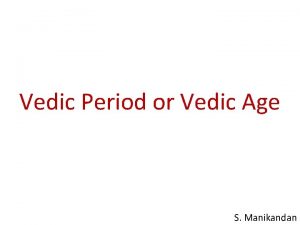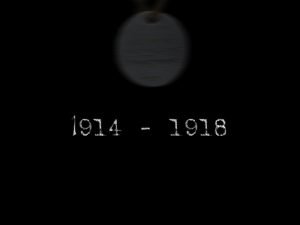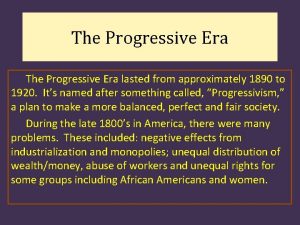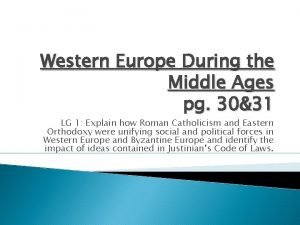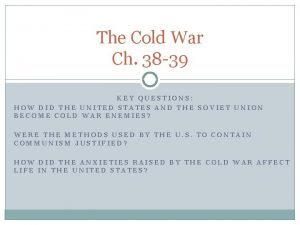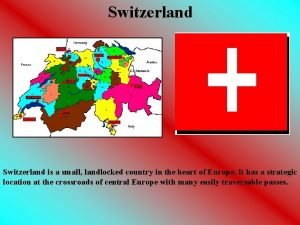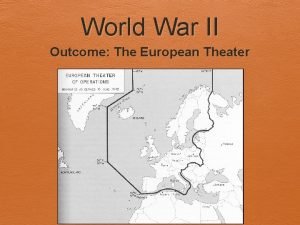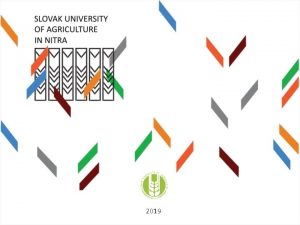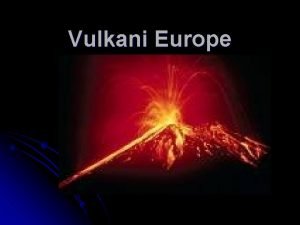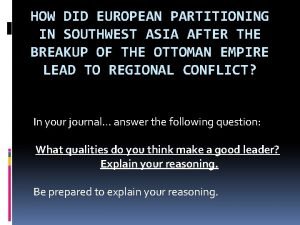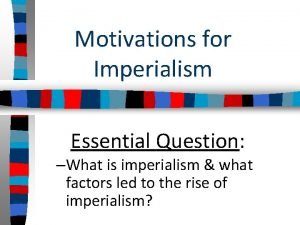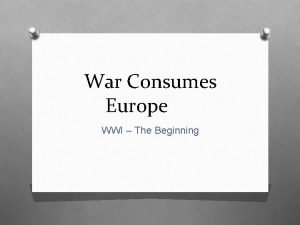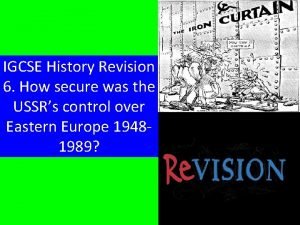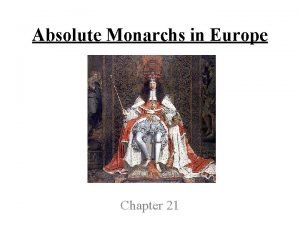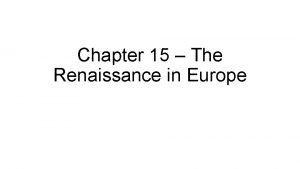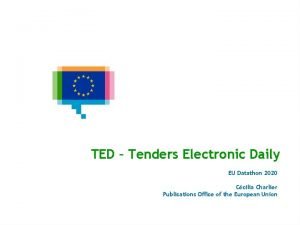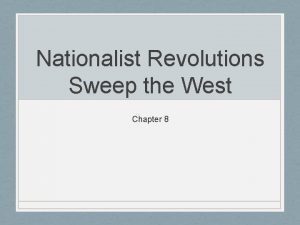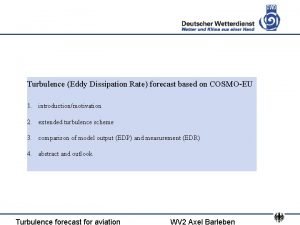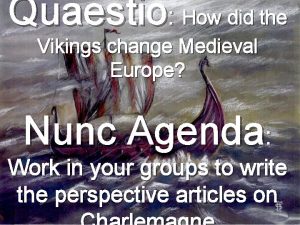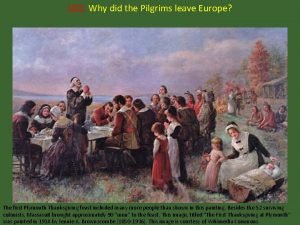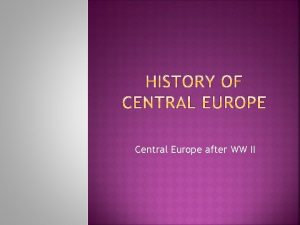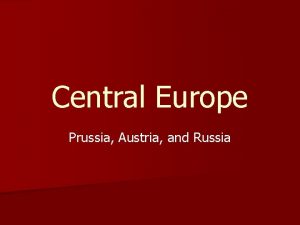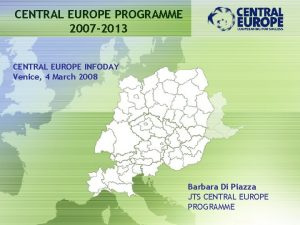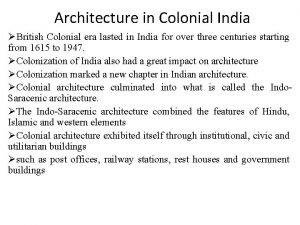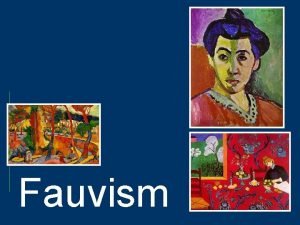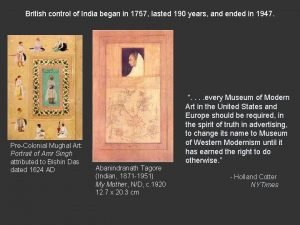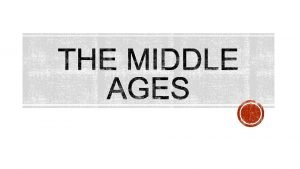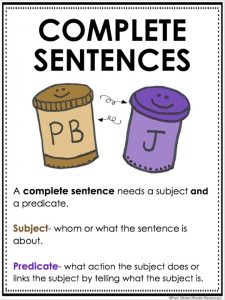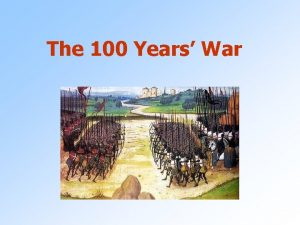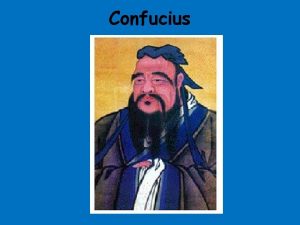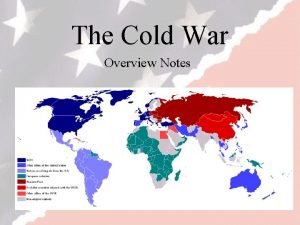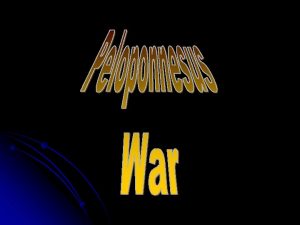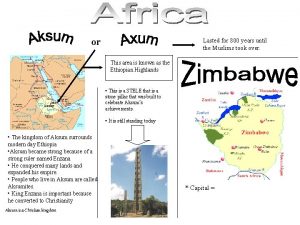Central Europe after WW II WW II lasted








































- Slides: 40

Central Europe after WW II

WW II lasted for 2. 194 days 30 states, operations – 40 states 110 millions of men and women (army) Neutral – Ireland, Portugal, Spain, Sweden and Swiss Soviet Union – 27 millions, China – 10 millions, Germany – 6 millions, Poland – 6 millions, Japan – 2. 5 millions, … Germany - the principle of collective guilt

New superpowers: US and Soviet Union (defeated Nazi Germany), in Asia – growing China New trend in European policy – left US – the strongest world economy April 1945 – OSN - United Nations charter, Security Council, General Assembly (50 states, today more then 193, international law, international security, economic development, social progress, human rights, and achievement of world peace, replaced the League of Nations, to stop wars between countries, and to provide a platform for dialogue. It contains multiple subsidiary organizations to carry out its missions)

J. V. Stalin, H. Truman, W. Churchill /C. Attlee

Main goals: 1. united Germany – 4 occupation zones only temporary plan 4 “D” – demilitarization, democratization, denazification, decartelization new boards – polish boards expulsion of Germans from Poland, Czechoslovakia, Hungary war reparations - products and raw materials punishment of war criminals

November 1945 – October 1946 24 Nazi functionaries were accused of crimes against peace and humanity 12 executed http: //www. youtube. com/watch? v=k. WR 2 I 5 Q 9 d 9 U

February 1947 Paris – Bulgaria, Finland, Italy, Hungary, Romania With Germany and Japan – NEVER signed (conference in Moscow - contradictions between the powers – how should be Germany organized – centralized x federated)

After the common enemy was defeated – relation between US and Soviet Union became worse and slowly the rivalry began US – better economy, atomic bomb, technically better equipped army Soviet Union – huge material lost, but still very powerful army – aroused American respect After Japan was defeated – H. Truman – stop supplying – first step: from alliance to enemies (Lend-Lease aid)

States of Central and Southeast Europe were liberalized mainly by Red Army From Czechoslovakia and Yugoslavia Red Army left immediately, but in Romania, Hungary, Poland, Finland in occupied zones (Austria, Germany) stayed

Growing power of the Soviet political system in these states Policy of these states should had been directly under the control of Soviet Union 1946 – 1948 emergency of the bloc of the states with so called Democratic People's Republic of… Out of direct sphere of influence – Greece, since 1955 Austria and Finland 1947 establishment of Infobyro – organization, Soviet government was able to control and lead the other communistic parties Growing leftist governments in West Europe


1947 - H. Truman – Doctrine against Communism http: //www. history. com/speeches/the-truman -doctrine 1946 – W. Churchill – Iron Curtain http: //www. youtube. com/watch? v=jvax 5 VUvj WQ 1946 – G. Marshall – Marshall Plan, Czechoslovakia and Poland had to refuse – definitive line between East and West http: //www. oecd. org/general/themarshallpla nspeechatharvarduniversity 5 june 1947. htm

No open military conflict Rivalry: policy, economy, science, culture and sport, …very dangerous phenomenon of the conflict East and West was armaments

Soviet Union x West Bloc In western occupation zones – 4 political parties, election, institutions under the occupation power gave the political power to new local governments In soviet zone – one party (communists and social democrats), land reform, nationalization of some factories and denacification (schools, offices) June 1948 - 3 zones – monetary reform, reparation was cancelled, Marshall Plan

Soviet, American, French and British


extreme poverty the black market - American cigarettes rationing is the controlled distribution of scarce resources, goods, or services. Rationing controls the size of the ration, one's allotted portion of the resources being distributed on a particular day or at a particular time. US and GB – 1. 1. 1947 – Bizone and April 1948 Trizone June 1948 – decision to establish Germany (3 zones) – Soviet reaction – occupation of western ways to Berlin - collapse in supplying the city. Berlin Crises

Common control of Germany was finished J. V. Stalin – to oust western army from Berlin – centre of the soviet zone June 1948 Soviet army started to block Berlin crises (http: //www. trumanlibrary. org/whistlestop/ BERLIN_A/PAGE_11. HTM) September 1949 – Federal Republic of Germany, Konrad Adenauer, Independent position – West Berlin October 1949 - GDR

President W. Pieck Soviet control Establishing - two German states - completed struggling for the post-war order in Europe

J. V. Stalin – new wave of terror, no criticism, labor camp http: //www. google. cz/search? q=soviet+working+c amps&hl=cs&prmd=imvns&source=lnms&tbm=isch& sa=X&ei=p. R 2 ZUMrw. CIj. Eswa. M 8 o. HIBA&ved=0 CAc. Q_A Uo. AQ&biw=1008&bih=619 extreme poverty x extreme investment – army Crises of agriculture, 1946 - crop failure Soviet policy - Soviet-bloc countries were subordinate Moscow, Soviet advisers in Security forces 1949 - Council for Mutual Economic Assistance

1949 Council for Mutual Economic Assistance - Soviet Union – economical power – control over the national economies, members: Soviet Union, Albania, Bulgaria, Romania, Czechoslovakia, Poland, Hungary, East Germany, …Cuba, Mongolia and Vietnam Political (Show)trials – ag. Communist and non – communists - accused of subversive activities, effort to find the culprit responsible for economic problems and effort to discourage people from disagreeing with the regime 50´s Hungary, Bulgaria, Czechoslovakia, … Milada Horaková

nationalization of industry, prohibitions and restrictions on private enterprise and the peasants were forced to join the collective farm Hardest enforcement - Soviet interests ended in 1953 http: //www. youtube. com/watch? v=TEw. VVm 89 og


ration repository, ended 1953

Lack of food 1947 - disastrous drought prerequisite for economic recovery - Monetary reform - Payroll reform - child benefit - Xmas benefits - extension of paid leave X Volume of industry ½ compare to before WWII URNA

United Nations Relief and Rehabilitation Administration (UNRRA), organization founded (1943) during World War II to give aid to areas liberated from the Axis powers. 52 participating countries, each of which contributed funds amounting to 2% of its national income in 1943. A sum of nearly $4 billion was expended on various types of emergency aid, including distribution of food and medicine and restoration of public services and of agriculture and industry. China, Czechoslovakia, Greece, Italy, Poland, the Ukrainian SSR, and Yugoslavia were the chief beneficiaries. UNRRA returned some 7 million displaced persons to their countries of origin and provided camps for about 1 million refugees unwilling to be repatriated. More than half the funds were provided by the United States.

May 1945 – wild expulsion (15, 000 – 30, 000)!! - displacement and expulsion of German populations, Saxon, Austria – 660, 000

August 1945 – transfer of German populatin form Czechoslovakia and Poland, expulsion of Hungarian population was not agreed Related President´s Decrees - revoke citizenship, National Administration of firms, confiscation of land immovable property, valuables Personal luggage 30 – 50 kilos Organized transfer – 1946 - Allied Control council. 2, 256, 000 1947 – 48 - Additional transfer - family reunification – 80, 000

http: //www. youtube. com/watch? v=g 6 IFf. Qd. M 7 EI&feature=related

In Slovakia 600, 000 Hungarians West powers did not agree with the transfer but 1946 - Czechoslovakian - Hungarian Agreement on exchange of populations (only 73, 000 to Slovakia and quite a lot of Romas)

1939 – 118, 310 x 1945 14, 045 Open asylum policy, pro – Jewish state policy Anna Hanusová – Flachová

BRENNER, H. : The Girls of Room 28: Friendship, Hope, and Survival in Theresienstad. New York 2009.

1946 – last democratic election - National Assembly Parties: - Communists (mass party. 1, 000) - National Socialists - The People's Party - Social Democrats - Democratic Party – Slovakia, …

- Czech lands: Communists – 40% X Slovakia: - Democratic Party – 62% x Communists – 30%

1947 – drought Reduction of the supplying – growing black market Slovakia – real poverty Soviet Union help – 600, 000 tons of grain x propaganda – Soviets saved Czechoslovakia again…

potato beetle

propaganda and publicity campaigns, mass protests, staged affair and assassination attempts, some of the policy component – provocation and espionage + close ties to the Soviet Union effort to influence opinion about situation in CZE convergence process of democratic forces began late – lack of unifying personality

Communists – mass POPULARITY Extra income to the Treasury government succumbed to pressure – state budget + 6, 000, 000 Czechoslovak crown (76 304 993 000 Kčs)

Feb 20 th – 12 ministers (non communists) resigned, expected early elections or resignation of KSČ X Communists took action Feb 21 st – demonstration in Prague

Feis, H. : Between War and Peace: The Potsdam Conference. Greenwood Publishing Group, 1983. Roberts, G. : Stalin's Wars: From World War to Cold War, 1939 -1953. Yale University Press, 2006. Kaplan, K. : The Short March: The Communist Takeover in Czechoslovakia, 1945 -1948. C. Hurst & Co. Publishers, 1987. Zeman, Z. : The Life of Edvard Beneš, 18841948: Czechoslovakia in Peace and War. Clarendon Press, 1997.
 If any man wants to come after me
If any man wants to come after me After me after me after me
After me after me after me What period lasted from 1750-1825?
What period lasted from 1750-1825? Sangrihitri during the vedic age was
Sangrihitri during the vedic age was Music of the classical period (1750 to 1820)
Music of the classical period (1750 to 1820) Lasted until 1914
Lasted until 1914 The progressive era lasted from
The progressive era lasted from In the shadow of pyramids achieve 3000
In the shadow of pyramids achieve 3000 Western europe after the fall of rome
Western europe after the fall of rome Europe after ww11
Europe after ww11 Is switzerland landlocked?
Is switzerland landlocked? Natural resources of northern europe
Natural resources of northern europe Feudalism in europe chapter 13 section 2
Feudalism in europe chapter 13 section 2 Free route airspace europe
Free route airspace europe Map of ww2 europe
Map of ww2 europe Franchise broker europe
Franchise broker europe Spread of christianity in europe
Spread of christianity in europe Le transport intermodal en europe
Le transport intermodal en europe Heart of europe slovakia
Heart of europe slovakia Zapadno morsko pročelje
Zapadno morsko pročelje Vulkani europe
Vulkani europe Western europe hdi
Western europe hdi Europe partitioning in southwest asia answer key
Europe partitioning in southwest asia answer key Industrialization of continental europe
Industrialization of continental europe How did europe imperialize africa
How did europe imperialize africa Mexem europe
Mexem europe War consumes europe
War consumes europe Ora ivanišević
Ora ivanišević Big data europe
Big data europe Amidet n
Amidet n Ussr control over eastern europe igcse
Ussr control over eastern europe igcse Chapter 15 section 3 fascism rises in europe
Chapter 15 section 3 fascism rises in europe Chapter 2 europe looks outward
Chapter 2 europe looks outward Chapter 21 section 1 spain's empire and european absolutism
Chapter 21 section 1 spain's empire and european absolutism Chapter 15 lesson 2 ideas and art of the renaissance
Chapter 15 lesson 2 ideas and art of the renaissance Eu datathon 2020
Eu datathon 2020 Chapter 8 nationalist revolutions sweep the west
Chapter 8 nationalist revolutions sweep the west Eight stages of genocide
Eight stages of genocide Europe turbulence forecast
Europe turbulence forecast “how did the vikings change medieval europe?”
“how did the vikings change medieval europe?” In order to leave europe the pilgrims needed to
In order to leave europe the pilgrims needed to



